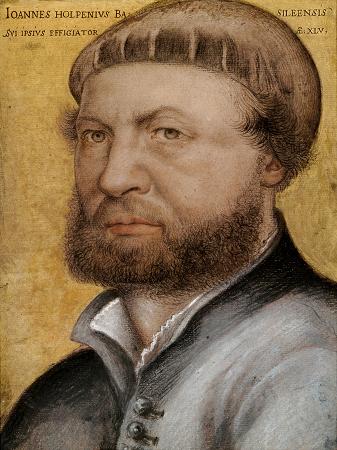Self Portrait. A self-portrait is a representation of an artist that is drawn, painted, photographed, or sculpted by that artist. One notable self-portrait is by Albrecht Dürer, in which he depicts himself as a confident and self-assured young man, with a direct gaze and a detailed rendering of his facial features. The portrait is notable for its realistic and detailed style, as well as its innovative use of oil paint, which allowed for greater depth and richness of color. Another notable self-portrait is Self-Portrait with a Straw Hat by Vincent van Gogh. This self-portrait is one of several that Van Gogh painted during his time in Paris, and is notable for its bold use of color and expressive brushwork. Van Gogh depicts himself with a straw hat and a bright blue jacket, against a background of swirling brushstrokes. The portrait is notable for its intense emotional energy, as well as its innovative use of color and form. A third notable self-portrait is Self-Portrait with Thorn Necklace and Hummingbird by Frida Kahlo, one of her most famous and recognizable works, notable for its bold use of symbolism and personal iconography. Kahlo depicts herself with a necklace of thorns and a hummingbird, against a background of lush vegetation. The portrait explores themes of pain, suffering, and resilience. Although self-portraits have been made since the earliest times, it is not until the Early Renaissance in the mid-15th century that artists can be frequently identified depicting themselves as either the main subject, or as important characters in their work. With better and cheaper mirrors, and the advent of the panel portrait, many painters, sculptors and printmakers tried some form of self-portraiture. Portrait of a Man in a Turban by Jan van Eyck of 1433 may well be the earliest known panel self-portrait. He painted a separate portrait of his wife, and he belonged to the social group that had begun to commission portraits, already more common among wealthy Netherlanders than south of the Alps. The genre is venerable, but not until the Renaissance, with increased wealth and interest in the individual as a subject, did it become truly popular. A self-portrait may be a portrait of the artist, or a portrait included in a larger work, including a group portrait. Many painters are said to have included depictions of specific individuals, including themselves, in painting figures in religious or other types of composition. Such paintings were not intended publicly to depict the actual persons as themselves, but the facts would have been known at the time to artist and patron, creating a talking point as well as a public test of the artist's skill. In the earliest surviving examples of medieval and Renaissance self-portraiture, historical or mythical scenes were depicted using a number of actual persons as models, often including the artist, giving the work a multiple function as portraiture, self-portraiture and history/myth painting. In these works, the artist usually appears as a face in the crowd or group, often towards the edges or corner of the work and behind the main participants. Rubens's The Four Philosophers is a good example. This culminated in the 17th century with the work of Jan de Bray. Many artistic media have been used for self-portraiture; apart from paintings, drawings and prints have been especially important. In the famous Arnolfini Portrait, Jan van Eyck is probably one of two figures glimpsed in a mirror-a surprisingly modern conceit. The Van Eyck painting may have inspired Diego Velázquez to depict himself in full view as the painter creating Las Meninas, as the Van Eyck hung in the palace in Madrid where he worked. This was another modern flourish, given that he appears as the painter and standing close to the King's family group who were the supposed main subjects of the painting. In what may be one of the earliest childhood self-portraits now surviving, Albrecht Dürer depicts himself as in naturalistic style as a 13-year-old boy in 1484. In later years he appears variously as a merchant in the background of Biblical scenes and as Christ. Leonardo da Vinci may have drawn a picture of himself at the age of 60, in around 1512. The picture is often straightforwardly reproduced as Da Vinci's appearance, although this is not certain. In the 17th century, Rembrandt painted a range of self-portraits. In The Prodigal Son in the Tavern, one of the earliest self-portraits with family, the painting probably includes Saskia, Rembrandt's wife, one of the earliest depictions of a family member by a famous artist. Family and professional group paintings, including the artist's depiction, became increasingly common from the 17th century on. From the later 20th century on, video plays an increasing part in self-portraiture, and adds the dimension of audio as well, allowing the person to speak to us in their own voice.
more...














